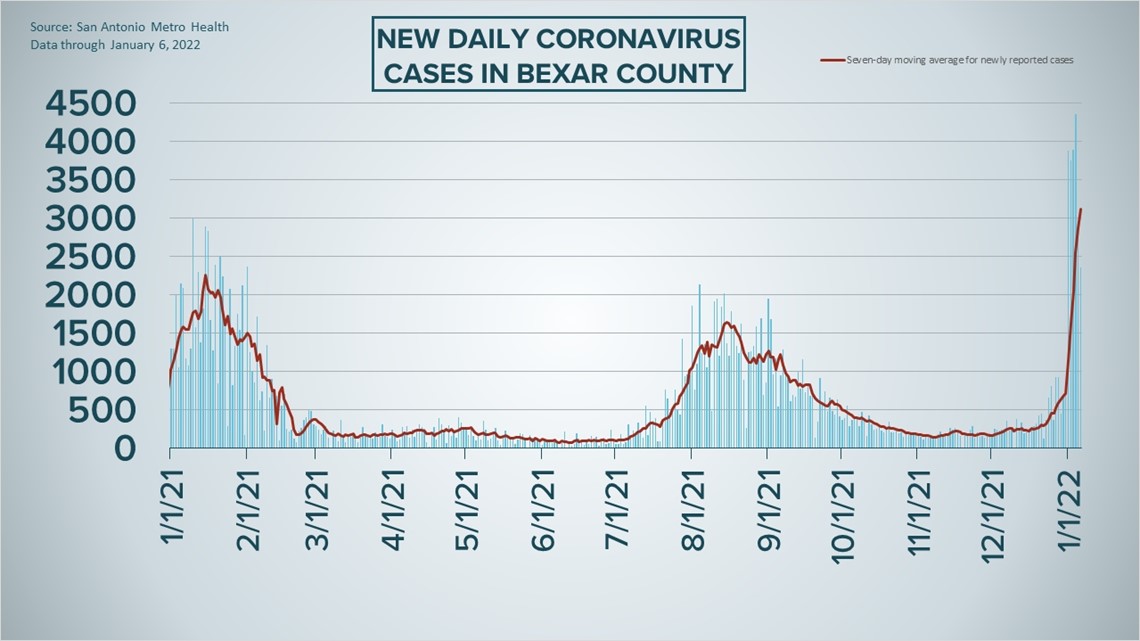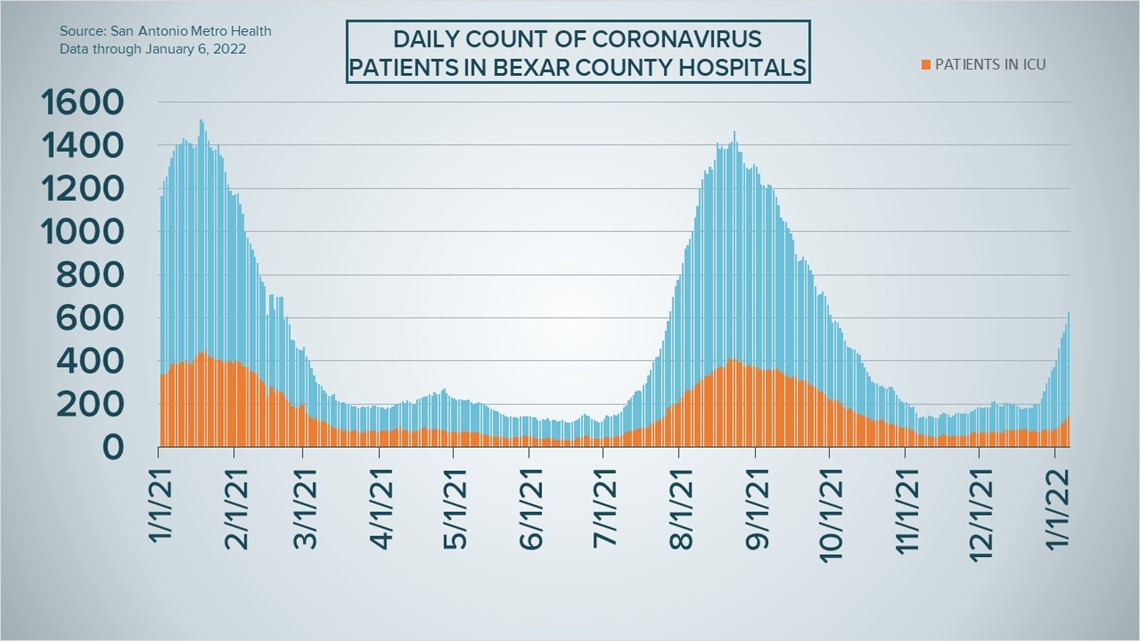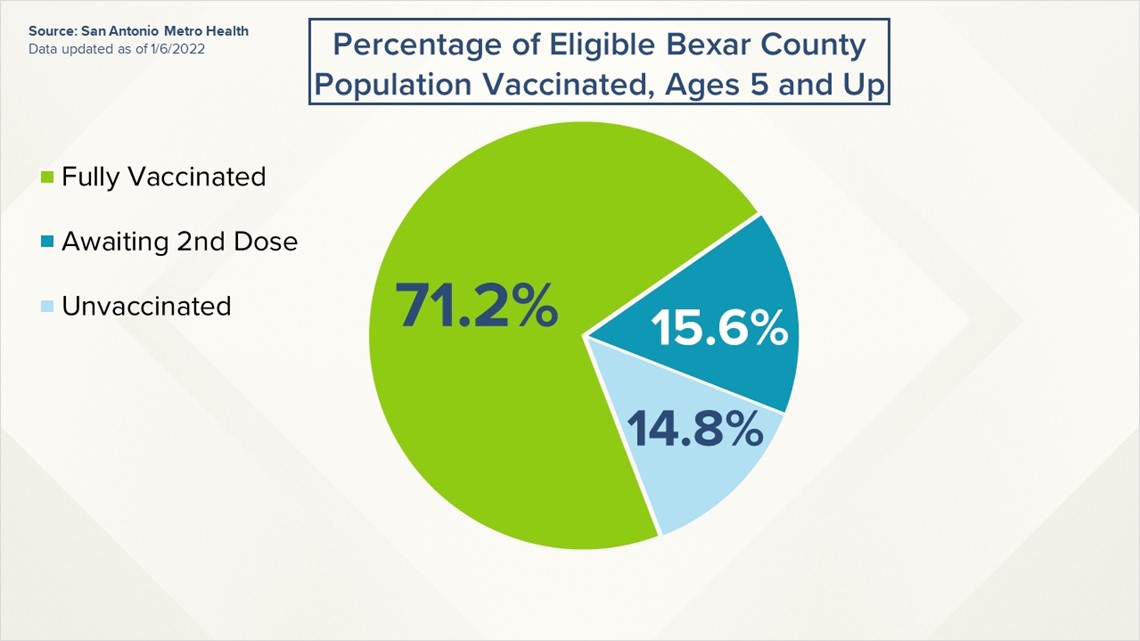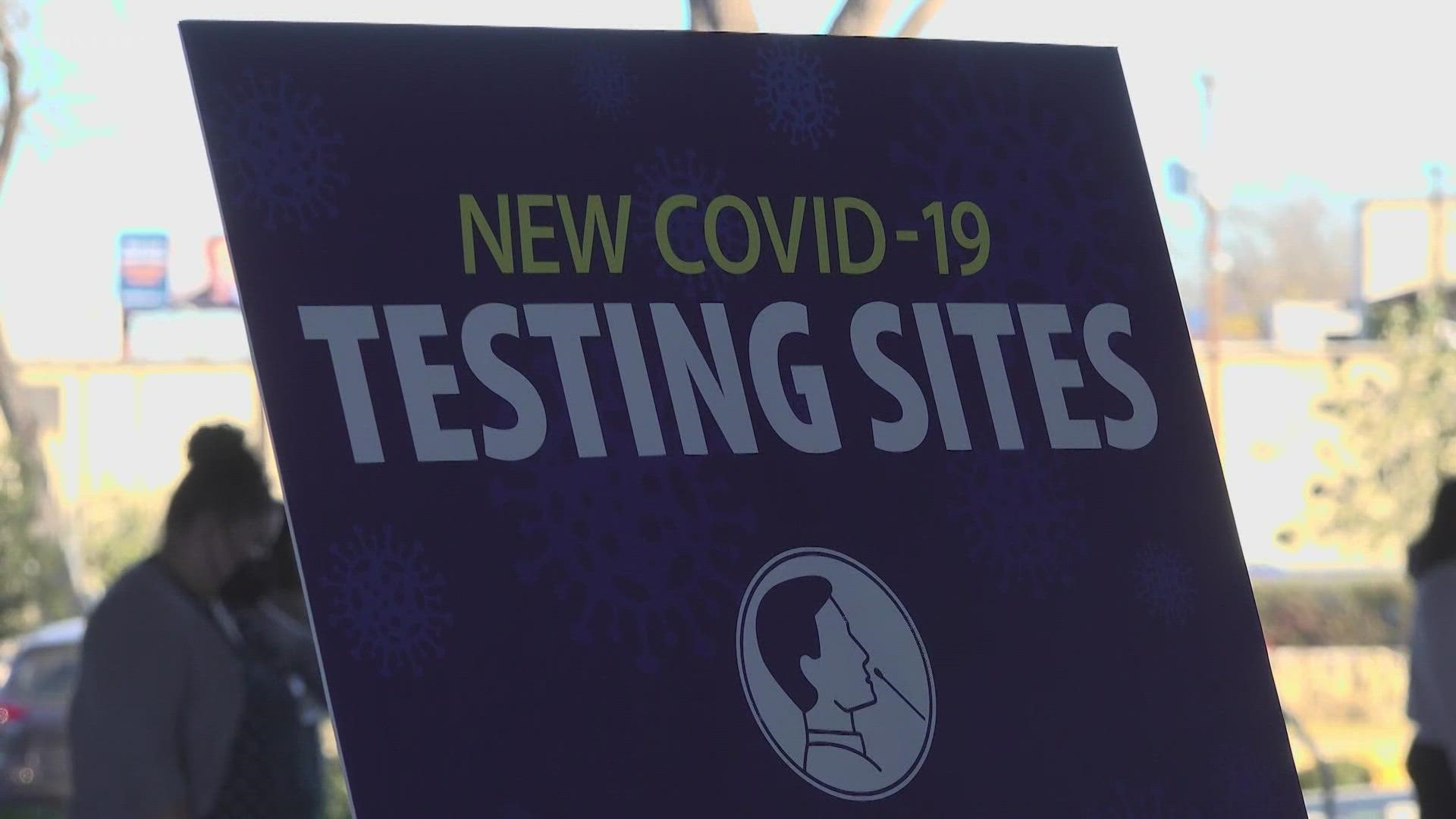SAN ANTONIO — More than 2,300 new COVID-19 cases were reported by San Antonio-area health authorities Thursday as the new year begins with a virus surge unlike any our area saw in 2021, a development exacerbated by the contagious omicron variant.
More than 21,000 diagnoses have been tallied by Metro Health so far this year, though the last two days have brought lower case counts compared to the first four days of 2022. Still, those comparatively high daily counts have brought our area's seven-day average for new cases to over 3,000 for the first time; it stands at 3,116 as of Thursday.
At the same time, six new deaths from virus-related complications were reported, bringing the total from the last two days to 13. Since omicron is considered a less severe variant of the coronavirus, Bexar County hasn't seen a two-day tally that high since late October.
And you'd have to go even further, to Sept. 30, to arrive at the last time there were as many local residents hospitalized with the coronavirus as there were on Thursday (625).
The newest COVID-19 wave has led San Antonio to organize three new mass, no-cost COVID-testing sites operating on a walk-up basis which will all be operational by Monday morning.
Meanwhile, the prolonged pandemic has affected the San Antonio Spurs as well as local universities' spring semester plans. And, doctors are reminding those experiencing symptoms not to fall for fake COVID-19 tests being sold online.
Nearly 361,000 San Antonio-area residents have been diagnosed with the coronavirus since the pandemic began, while 4,990 have died from complications.
How Bexar County is trending




Vaccine Progress in Bexar County
The following numbers are provided by San Antonio Metro Health. A full breakdown can be found here.
- 1.644 million eligible Bexar County residents have received at least one dose of the coronavirus vaccine as of Thursday, Jan. 6, representing 86.8% of the county's population eligible (those over the age of 4) to receive a vaccination.
- 1.348 million eligible Bexar County residents are fully vaccinated as of Thursday, Jan. 6, representing 71.2% of the county's population eligible to receive a vaccination.


The CDC states that "when a high percentage of the community is immune to a disease (through vaccination and/or prior illness)," that community will have reached herd immunity, "making the spread of this disease from person to person unlikely."
The City of San Antonio breaks down the vaccination rates by zip code on Metro Health's Vaccination Statistics page.
Coronavirus in Texas
The total number of coronavirus cases in the state since the pandemic began grew by 44,967 on Thursday, according to the Texas Department of State Health Services. That total includes 35,453 new confirmed cases and 9,514 new probable cases. More details can be found on this page.
Thursday's figures bring the total number of Texans diagnosed with COVID-19 to more than 4.892 million.
An additional 126 Texans have died from virus complications, meanwhile, raising the statewide death toll to 75,014.
Latest Coronavirus Headlines
- City of San Antonio and Community Labs opening three new COVID testing sites
- Keldon Johnson, Derrick White, Devin Vassell, Thad Young enter NBA's coronavirus health and safety protocols
- Here are the San Antonio universities delaying spring classes due to coronavirus concerns
- CDC: All US cruise ships with passengers have reported COVID-19 cases
- More mass COVID-19 testing sites coming to San Antonio
- Restaurants scaling back operations as omicron exacerbates labor shortage
- Grammys postpone Jan. 31 show, citing omicron variant risks
Coronavirus symptoms
The symptoms of coronavirus can be similar to the flu or a bad cold. Symptoms include fever or chills, cough, shortness of breath or difficulty breathing, fatigue, muscle or body aches, headache, new loss of taste or smell sore throat, congestion or runny nose, nausea or vomiting, and diarrhea, according to the Centers for Disease Control.
Most healthy people will have mild symptoms. A study of more than 72,000 patients by the Centers for Disease Control in China showed 80 percent of the cases there were mild.
But infections can cause pneumonia, severe acute respiratory syndrome, kidney failure, and even death, according to the World Health Organization. Older people with underlying health conditions are most at risk.
Experts determined there was consistent evidence these conditions increase a person's risk, regardless of age:
- Chronic kidney disease
- COPD (chronic obstructive pulmonary disease)
- Obesity (BMI of 30 or higher)
- Immunocompromised state (weakened immune system) from solid organ transplant
- Serious heart conditions, such as heart failure, coronary artery disease, or cardiomyopathies
- Sickle cell disease
- Type 2 diabetes
- The CDC believes symptoms may appear anywhere from two to 14 days after being exposed.
Human coronaviruses are usually spread...
- Between people who are in close contact with one another (within about 6 feet).
- Through respiratory droplets produced when an infected person coughs, sneezes or talks. These droplets can land in the mouths or noses of people who are nearby or possibly be inhaled into the lungs.
- Some recent studies have suggested that COVID-19 may be spread by people who are not showing symptoms.
Help stop the spread of coronavirus
- Stay home when you are sick.
- Eat and sleep separately from your family members
- Use different utensils and dishes
- Cover your cough or sneeze with your arm, not your hand.
- If you use a tissue, throw it in the trash.
Find a Testing Location
City officials recommend getting a COVID-19 test if you experience fever or chills, cough, shortness of breath or difficulty breathing, fatigue, muscle or body aches, headache, new loss of taste or smell, sore throat, congestion or runny nose, nausea or vomiting, or diarrhea.
Here's a Testing Sites Locator to help you find the testing location closest to you in San Antonio.

